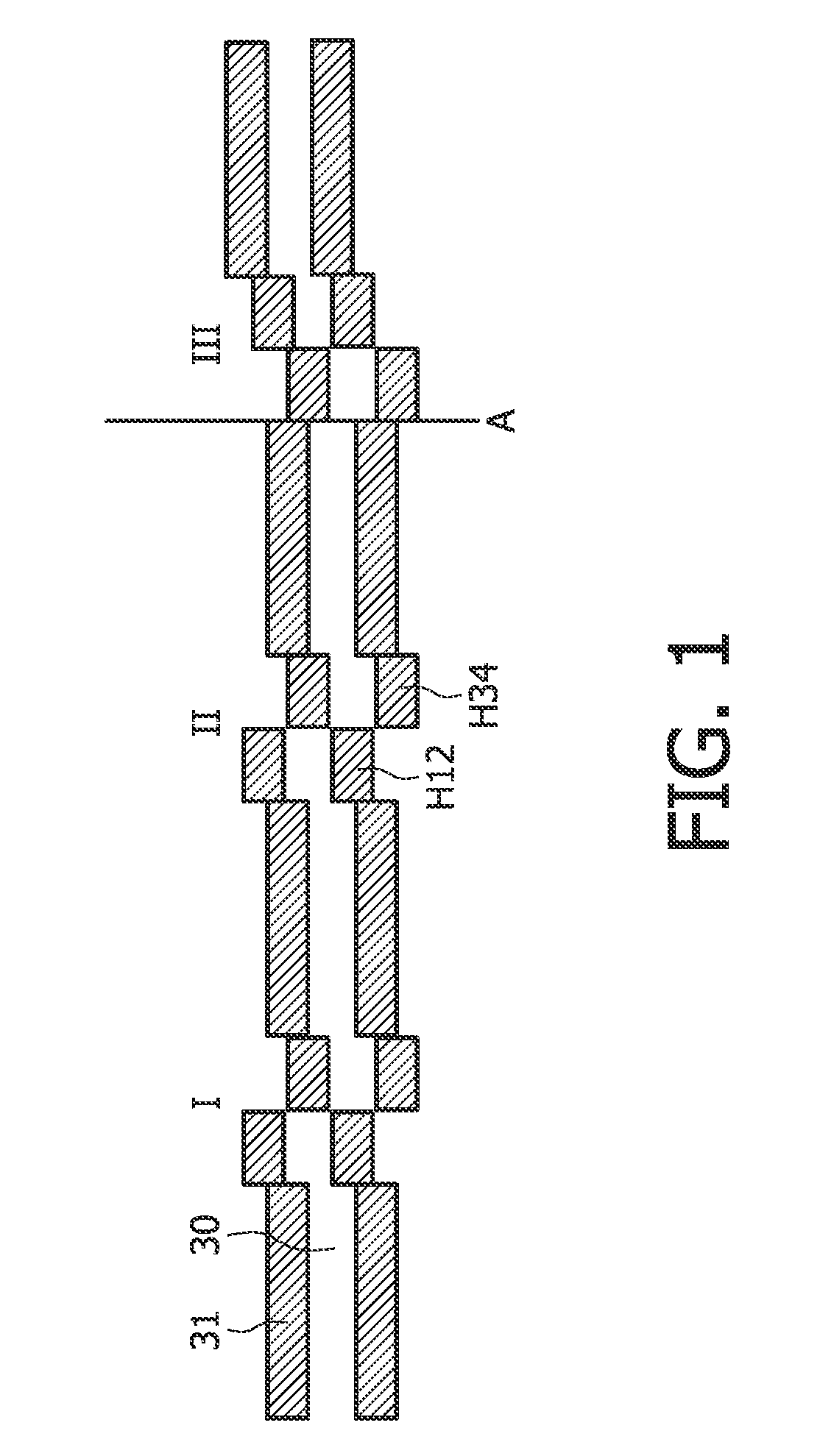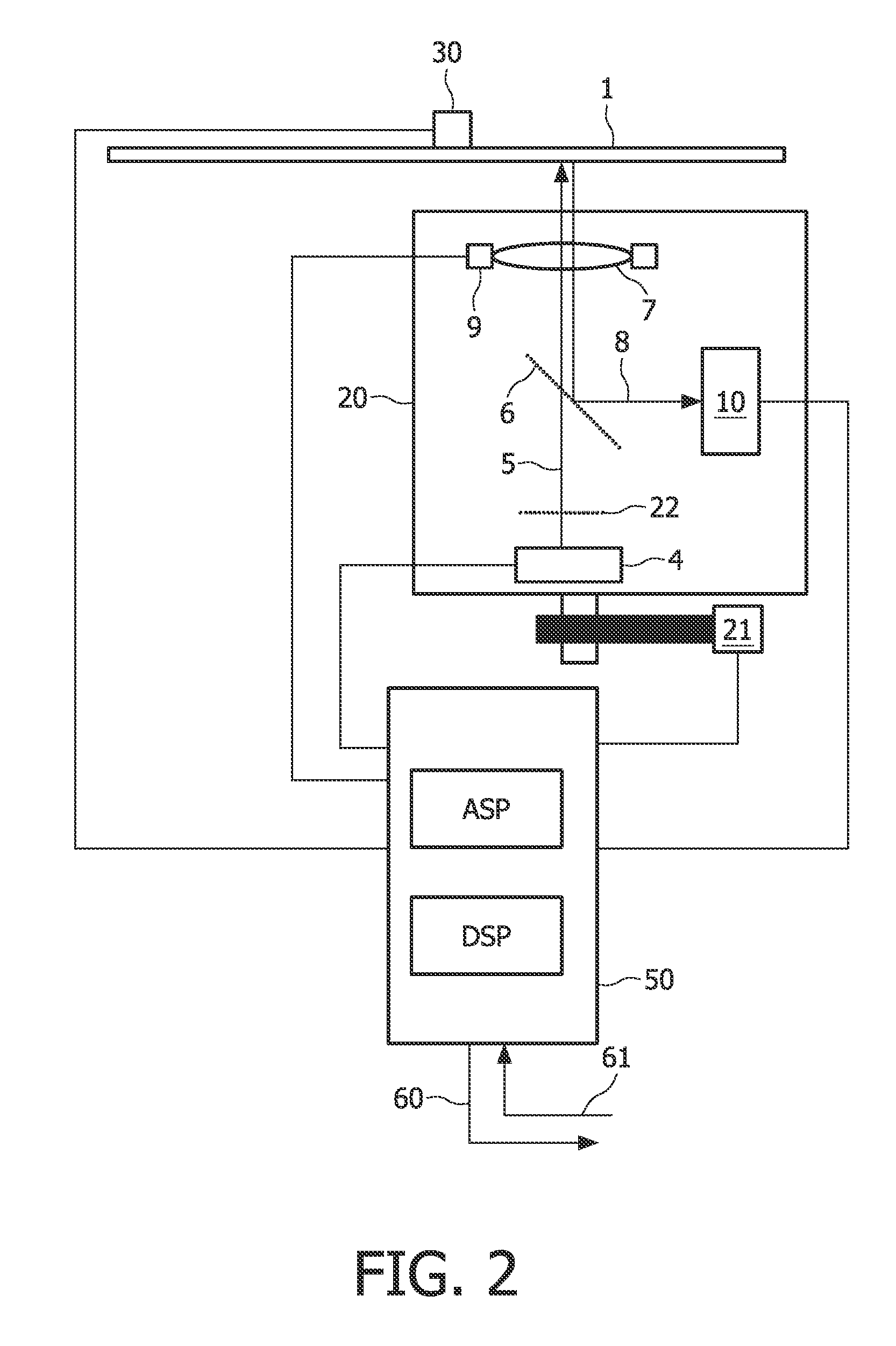Method and optical drive for detecting a header region on an optical carrier
- Summary
- Abstract
- Description
- Claims
- Application Information
AI Technical Summary
Benefits of technology
Problems solved by technology
Method used
Image
Examples
Embodiment Construction
[0039]FIG. 1 is a schematic illustration of the DVD-RAM format. The present invention is particularly suited for application for an optical carrier having a format according to the DVD-RAM standard, but the present application is by no means limited to this specific format and the present invention may also find application for other formats. The header sections I, II and III shown in FIG. 1 are arranged with four headers grouped two by two, the two header groups H12 and H34 being offset half a track pitch in opposite direction relative to each other and to the groove 31 and land 30 center track position. Furthermore, at the intersection A of each revolution of groove 31 and land 30, the last sector groove (land) connects to the first sector of the land (groove) and at the same time the polarity of the two header groups H12 and H34 are changed. Going from header region I to header region II there is no change of polarity, whereas header region III has a change of polarity relative t...
PUM
 Login to View More
Login to View More Abstract
Description
Claims
Application Information
 Login to View More
Login to View More - R&D
- Intellectual Property
- Life Sciences
- Materials
- Tech Scout
- Unparalleled Data Quality
- Higher Quality Content
- 60% Fewer Hallucinations
Browse by: Latest US Patents, China's latest patents, Technical Efficacy Thesaurus, Application Domain, Technology Topic, Popular Technical Reports.
© 2025 PatSnap. All rights reserved.Legal|Privacy policy|Modern Slavery Act Transparency Statement|Sitemap|About US| Contact US: help@patsnap.com



